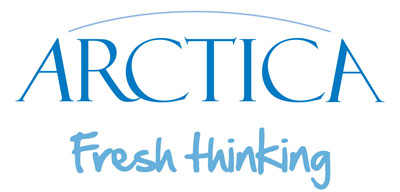In the fast-moving food and beverage sector, flexibility isn’t just a luxury, it’s a necessity. Markets shift, product ranges change and new technologies emerge faster than ever before. A factory designed only for today can easily limit tomorrow’s potential.
That’s why scalability lies at the heart of Arctica’s design philosophy. Every facility we create is planned not only for immediate efficiency but also for controlled, cost-effective expansion in the years ahead.
Building Flexibility into the Blueprint
A scalable factory starts with good planning. The layout, services and structure all need to anticipate future growth. That might mean allowing space for additional process lines, extra cold storage or an expanded dispatch area without major disruption.
Our approach often uses modular design principles, where facilities are built in sections that can be added, extended or reconfigured as production evolves. This method reduces downtime, simplifies construction and helps manufacturers invest in growth gradually rather than all at once.
With thoughtful design, expansion becomes an evolution, not a rebuild.
The Benefits of Phased Growth
Phased expansion is one of the most practical strategies for food manufacturers looking to balance investment with demand. Instead of overcommitting capital, businesses can grow capacity step by step as sales increase.
This approach also helps manage risk. By assessing each phase as it comes online, clients can fine-tune equipment choices, process flow and energy use before moving to the next stage. The result is smarter, data-driven growth that keeps the facility performing at its best.
Arctica’s role is to ensure that each phase fits seamlessly into the master plan. Utilities, drainage, and air handling systems are all designed from the outset to handle future expansion without major rework.
Engineering for the Future
True scalability depends on the technical backbone of the facility. A factory’s mechanical and electrical systems must be able to grow without starting from scratch.
That’s why our engineers design services with spare capacity and flexible routing. Electrical panels, chilled water loops and control systems are configured so that new equipment can be connected quickly and safely later on.
This foresight keeps projects efficient, compliant and ready for new technologies, whether that’s automation, robotics or digital monitoring.
Sustainable Growth by Design
Modular and phased expansion also aligns with sustainability goals. Instead of overbuilding and leaving areas unused, manufacturers can scale responsibly, reducing both embodied carbon and operational energy use.
By planning for long-term efficiency, Arctica helps clients avoid the waste that comes from poorly coordinated or reactive upgrades. A factory designed for scalability supports business growth and environmental responsibility in equal measure.
Conclusion
Scalability isn’t just about size, it’s about readiness. A well-designed food factory grows with the business, adapts to new technologies and remains compliant without constant redesign.
Arctica’s modular and phased design strategies make that possible. From concept to expansion, we create facilities that perform today and evolve for tomorrow.




